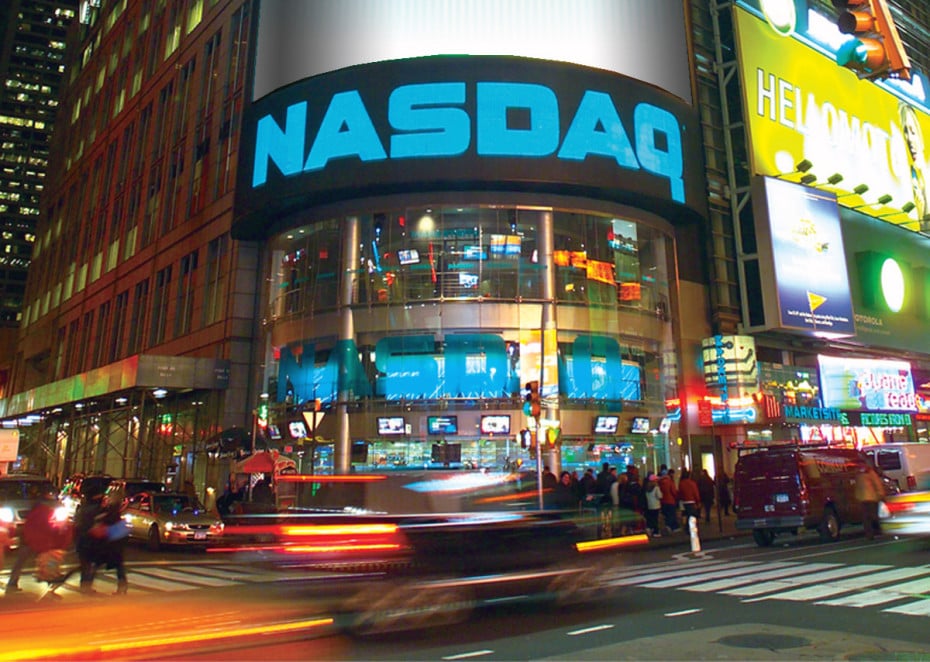Lars Ottersgård, executive vice president and & head of market technology at Nasdaq, predicted that in five years the majority of clients will have moved from in-house enterprise solutions to managed services.
Within the Nasdaq group, market technology is responsible for delivering market infrastructure products, including trading, real-time risk, index, clearing, central securities depository and market surveillance systems. The division has more than 100 marketplaces, regulators, clearinghouses and central securities depositories around the globe as clients according to the Nasdaq website.
Ottersgård told Markets Media that clients are facing increased competition, revenue pressure and more regulatory complexity and so are open to exploring outsourcing and managed services.
 Lars Ottersgard, Nasdaq
Lars Ottersgard, Nasdaq
“We are at a breakpoint in our history from building enterprise software in-house to managed services and outsourcing through a platform-as-a-service approach,” said Ottersgård.“Our whole technology platform and the services we offer clients via the Nasdaq Financial Framework will be cloud-enabled.”
The Nasdaq Financial Framework was launched in 2016 so clients can easily integrate business applications, such as settlement, with new technologies. The Nasdaq Financial Framework is open to clients to build their own apps and functionality through open APIs.
Ottersgård said: “I predict in five years’ time the majority of clients will have moved from in-house enterprise solutions to managed services. To meet this demand we will become more efficient and also hire more people.”
He continued that Nasdaq is focussed on new technologies including the cloud, distributed ledger technology and machine intelligence.
Nasdaq has deployed machine learning technology for surveillance across its Nordic markets. The exchanges in Stockholm, Copenhagen, Helsinki and Iceland implemented machine learning within Nasdaq’s Smarts surveillance technology to analyze data and spot abnormal events, particularly during busy periods such as the market open and close. The machine learning capabilities are used to prioritize the surveillance workflow as the technology predicts the likelihood that the event will lead to an action by an analyst.
Last year Nasdaq acquired Sybenetix, a UK that combines behavioral analytics and cognitive computing to provide surveillance for asset managers.
 Adena Friedman, Nasdaq
Adena Friedman, Nasdaq
Adena Friedman, president and chief executive of Nasdaq, said in a statement at the time: "We believe behavioral science, cognitive computing and machine intelligence are essential to a successful, holistic surveillance offering and critical to efficient and effective organizational compliance with an increasingly intricate global regulatory environment."
Friedman continued that the Sybenetix acquisition accelerated Nasdaq’s offering to the buyside.
Consultancy Opimas said in a report this month that market participants are focused on reducing surveillance costs through improving the quality of alerts and automating investigations. Most surveillance is presently conducted in siloes with separate systems for each communication channel and asset class. Opimas added: “With false alert reduction as the primary driver, institutional spending on technology is expected to rise - up to $1.4bn by 2021.”
Ottersgård told Markets Media: “There are a lot of new opportunities for business expansion and creating new offerings including regtech, expanding further into the buyside beyond compliance and providing R&D for clearing houses and exchange clients.”
Nasdaq also has an intense R&D program for technology and collaborates with universities such as MIT in the US. “We are interested in new technological developments such as quantum computing and finding ways to apply them to the capital markets,” added Ottersgård.
Using machine intelligence in the Nordics is an example of the market technology division developing an offering for an internal business. “We have the luxury of having strong internal partners to develop services across asset classes and across the globe, but we also develop new services with clients,” said Ottersgård.
For example, last year the SIX Swiss Exchange and Nasdaq, together with technology partner Chain, said they will be testing DLT for the Swiss venue’s over-the-counter structured products. Nordic financial services group SEB and Nasdaq have announced a joint project to test a developed prototype for a mutual fund trading platform based on blockchain technology.
In addition to expanding in capital markets, Nasdaq is also aiming to grow in new non-financial markets. Ottersgård gave the example of insurance and re-insurance and container transport, but said Nasdaq’s technology could be used by any industry that requires price formation and needs a matching engine.
“The opportunity to expand into non-financial markets is bigger than our traditional market operator segment over time, but it takes longer to disrupt existing models,” he added.
Friedman said in the presentation for Nasdaq’s full year 2017 results: “We are building upon the success of 2017 by establishing three new execution priorities for 2018, including progressing our pivot to align with and maximize our opportunities as an innovative analytics and technology partner, developing and deploying our ‘markets economy' technology strategy, and continuing to advance our competitive position in our core businesses.”
Market Technology order intake was $292m last year while total order backlog was a record $847m as at 31 December 2017. Nasdaq signed a record six new exchange clients last year across core trade matching, risk management and post-trade systems, including clients in Panama, South Africa and Kazakhstan.
Ottersgård said: “Our job is to create value for members and clients and if we do that, they will be be prepared to pay for those services.”














